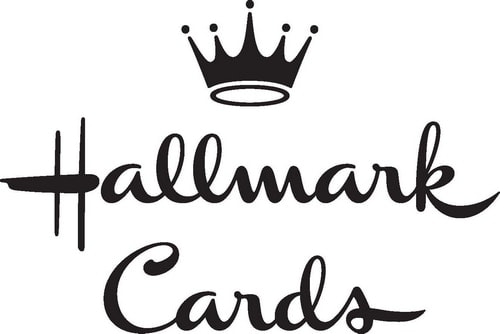The Marketing mix of Hallmark Cards analyses the 4Ps of Hallmark Cards, which include the Product, Price, Place, and Promotion of Hallmark Cards. Hallmark Cards is a private company of American origins. It was founded in 1910 by its founder, Joyce Hall, and had its headquarters in Kansas City in the United States. The company is associated with the Greeting Cards industry and deals in manufacturing and selling. In the United States, Hallmark Cards has achieved the number one position as the largest manufacturer. Some of its competitors in this field are as follows-
- American Greetings
- Recycled Paper Greetings
- Galison
- Blue Mountain
- Moo
- Some Ecards
- Cardstore
About Hallmark Cards
- Type: Private, family-owned company
- Industry: Greeting cards, gift wrap, and related products
- Founded: 1910
- Founders: Joyce Hall
- Headquarters: Kansas City, Missouri, United States
- Area served: Worldwide
- Current CEO: Mike Perry
- Number of employees: 20,000+
- Major products: Greeting cards, gift wrap, party supplies, ornaments, and other gift items
Table of Contents
Hallmark Cards Product Strategy
Hallmark is one of the most recognized brand names in the greeting Cards industry, and its products are sold under three brand names: Ambassador, Shoebox, and Hallmark. It is a multinational corporation that, with time, has added different products in its kitty to maintain the interest and loyalty of its consumer base, like cards, lanterns, scrolls, stationary, gifts, soft toys, gift hamper, personalized gifts, chocolates, quotations, mugs, Christmas-tree ornaments, and photo frames. It has also launched digitalized eCards in the market for techno-savvy consumers. Its product list for diversified sections includes
- Birthday- In this category, hampers, gifts, cards, age cards, and personalized cards are available
- Love Gifts- Love Greetings, mugs, photo frames, love combo, and quotations are available in this section
- Greeting Cards- It is the most popular segment of Hallmarks Cards and includes a diversified range of anniversary cards, birthday cards, neon-glo cards, personalized cards, wedding cards, friendship cards, Father’sfather’s Day cards, Mother’s Day cards, congratulations cards, and love cards
- Occasions- Cards to mark a special occasion are available for New Year, Christmas, Daughter’s Day, Diwali, Holi, Birthdays, Anniversaries, Rakhi, Love, Farewell, Congratulations, Wedding, Friendship, teacher’s Day and Parent’s Day
- For Him- This segment is for the male gender, like a baby boy, son, friend, dad, brother, boyfriend, and husband
- For Her – It includes female gender like a baby girl, friend, daughter, sister, mom, wife, and girlfriend
The product mix of Hallmark Cards in 2023 is as follows(Source)
- Greeting Cards: Birthday Cards, Anniversary Cards, Wedding Cards, Thank You Cards, Get Well Soon Cards, Sympathy Cards, Congratulations Cards, Holiday Cards (Christmas, Easter, Valentine’s Day, etc.), Friendship Cards, Just Because Cards, Encouragement Cards, Graduation Cards
- Seasonal Products: Christmas Ornaments, Halloween Decorations, Easter Decor, Valentine’s Day Gifts, Thanksgiving Decor
- Gift Items: Stuffed Animals, Gift Wrap and Gift Bags, Keepsake Ornaments, Personalized Gifts, Jewelry, Candles, Picture Frames, Home Decor, Collectibles
- Stationery and Paper Products: Note Cards, Stationery Sets, Journals and Planners, Calendars
- Party Supplies: Party Decorations, Balloons, Gift Wrap and Bags
- Gift Books: Inspirational Books, Cookbooks, Children’s Books, Self-Help and Motivational Books
- Specialty Cards: Pop-Up Cards, Musical Cards, 3D Cards, Interactive Cards
- Hallmark Gold Crown Stores: Exclusive Hallmark-branded products, Special editions and limited-time offerings
- E-Cards and Digital Products: Hallmark offers a digital platform for sending e-cards and personalized messages online.
Hallmark Cards Place Strategy
Hallmark Cards has spread its presence to several countries worldwide through its products. It started in Kansas City, Missouri, United States, and eventually expanded to most parts of the country. Its product line and employee count continue to flourish as it expands from one store to another in different cities.
The company has nearly thirty-eight thousand retail outlets in the United States, most independently owned. Hallmark cards have a strong distribution network that includes services of licensee suppliers and operates on the franchise system in the global market. It has markets in one hundred countries like India, Canada, Australia, France, New Zealand, Japan, Germany, and the United Kingdom.
Here are five key elements of their place strategy:
- Retail Presence: Hallmark Cards strategically places its products in many retail locations, including Hallmark Gold Crown Stores, supermarkets, drugstores, and independent gift shops, to ensure customers can find their cards and gifts conveniently.
- E-commerce: The company has a robust online presence, allowing customers to purchase their products through their official website. This provides a convenient option for customers shopping online, especially for personalized and customized items.
- Global Distribution: Hallmark has a global distribution network to reach customers worldwide. They work with distributors and partners to ensure their products are available in various countries, adapting to local preferences and cultures when necessary.
- Shop-in-Shop Displays: Hallmark often collaborates with retailers to create dedicated “shop-in-shop” displays, which showcase a wide range of their products within larger stores. This helps draw attention to their products and enhances their visibility.
- Customer Loyalty Programs: Hallmark’s loyalty programs, such as the Hallmark Crown Rewards program, encourage repeat purchases by offering rewards, discounts, and incentives to customers who frequent their stores or purchase online. This helps build customer loyalty and encourages them to return to Hallmark’s retail outlets.
Hallmark Cards Pricing Strategy
Hallmark registered its revenue figures at 3.8 billion dollars by the end of 2014. The company realizes the impact of pricing policies on its products’ sales and has conducted extensive research to know its consumers’ various trends and mindsets.
The company faces lots of competition in the market and wants to make further inroads, hence going for both penetration of technology and competitive strategy. Hallmark Cards has kept its prices at marginally lower rates than its rivals.
It has adopted a very reasonable pricing policy, and its affordable rates and quality products, along with a recognized brand name, have helped other companies around it generate more extensive sales and create better revenues.
Here’s an overview of Hallmark’s price strategy:
- Premium Pricing: Hallmark Cards follows a premium pricing strategy, positioning itself as a brand that offers superior quality and sentiment in its products. They price their greeting cards and gifts higher than many competitors, emphasizing the emotional value and craftsmanship behind each item.
- Value-Based Pricing: While Hallmark’s products may be priced at a premium, they also focus on delivering value to customers. This means that customers perceive that they receive substantial value, not just in the physical product but also in the emotional connection and personalization that Hallmark products offer.
- Tiered Pricing: Hallmark offers a range of products with varying price points to cater to a diverse customer base. They have cards and gifts available at different price tiers, from affordable options to high-end collectibles.
- Promotions and Discounts: Hallmark strategically utilizes promotions and discounts, especially during peak seasons and holidays, to incentivize purchases. These promotions can include buy-one-get-one (BOGO) deals, percentage discounts, or bundled offers that encourage customers to buy multiple items.
- Loyalty Programs: The Hallmark Crown Rewards program significantly influences their price strategy. By offering rewards, points, and exclusive discounts to loyal customers, Hallmark builds customer retention and encourages repeat business.
Hallmark Cards Promotion Strategy
Hallmark Cards has been trying to connect people emotionally through its products. It has made a genuine difference in everyday life as it is one of the best mediums to show that one cares about the other. Hallmark has adopted several marketing strategies and policies to impact customers’ mindsets positively.
It was the first company in the greeting cards industry to print its brand name on the back side of every card and advertise nationally via an ad in Ladies Home Journal. Hallmark Cards has several awards and trophies to its name. For instance, in 1985, it received the National Medal of Arts.
Hallmark Cards employs a promotion of marketing strategy centered on the following key elements:
- Seasonal Campaigns: Hallmark leverages seasonal occasions like holidays, birthdays, and special events to run targeted marketing campaigns across various channels, emphasizing the emotional connection their products create.
- Customer Loyalty Programs: The company nurtures customer loyalty through its Hallmark Crown Rewards program, offering exclusive discounts, personalized recommendations, and special offers to incentivize repeat purchases.
- In-Store Experience: Hallmark enhances the in-store experience with visually appealing displays, interactive promotions, and personalized assistance to engage customers and encourage product discovery.
Some Recent Video ads and Print ads for Hallmark Cards are:
Liked this post? Check out the complete series on Marketing Mix


Thank you for the information. According to you what is the positioning strategy of hallmark?